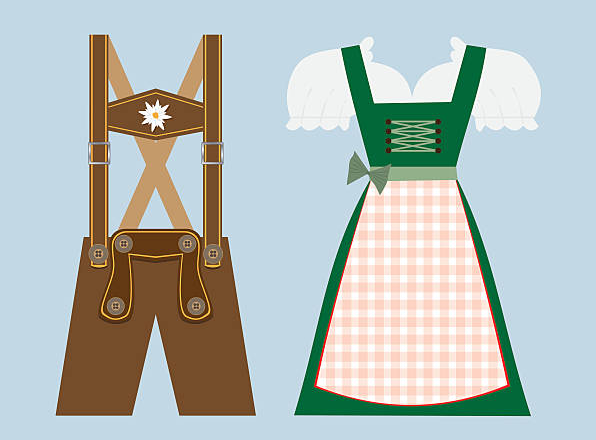Mushanana, better known as the Burundi National Dress, holds immense cultural significance in the country. It is a traditional attire that reflects the rich heritage and identity of the Burundian people. In this article, we will explore the history, characteristics, symbolism, and evolution of Mushanana, highlighting its role in Burundian society. We will also discuss its global influence and the challenges it faces in the modern era.
History and Cultural Background of Burundi National Dress
The origin of Mushanana can be traced back to the early days of Burundian civilization. It has been an integral part of the country’s cultural practices and traditions for centuries. The dress incorporates traditional elements and designs that reflect the unique cultural identity of the Burundian people. Mushanana plays a central role in cultural celebrations, such as weddings, initiation ceremonies, and harvest festivals.
Characteristics of Mushanana
Mushanana is characterized by its distinctive fabric, colors, patterns, and styles. It is typically made from locally sourced materials, such as handwoven cotton or silk. The dress features vibrant colors and intricate patterns, often representing elements of nature, animals, or geometric designs. There are various styles and variations of Mushanana, each with its own regional and cultural significance.
Symbolism and Meaning of Burundi National Dress
Mushanana holds deep symbolism in Burundian culture. It represents cultural identity, heritage, and pride. Wearing Mushanana is a way for individuals to showcase their status and social significance within the community. The dress also plays a role in expressing gender roles and traditional values, with specific designs and styles associated with men and women.
Traditional Techniques and Artistry
Creating Mushanana involves traditional techniques passed down through generations. Handweaving and embroidery are the primary methods used to craft the dress. Skilled artisans employ traditional tools and implements, showcasing their artistry and attention to detail. Efforts are being made to preserve these traditional techniques and ensure their continuation for future generations.
Evolution and Modernization of Burundi National Dress
With the influence of contemporary fashion and globalization, Mushanana has evolved over time. Modern designers have incorporated elements from international fashion trends, resulting in a fusion of traditional and modern styles. Efforts are also being made to revitalize interest in Mushanana and promote cultural preservation through fashion shows, exhibitions, and collaborations.
Significance of Mushanana in Burundian Society
Mushanana holds significant cultural and ceremonial value in Burundian society. It is worn during important rituals, ceremonies, and special occasions. Weddings, for example, are incomplete without the bride and groom adorning Mushanana. Cultural revivals and festivals also provide a platform to showcase the beauty and cultural heritage of Mushanana.
The Global Influence of Mushanana
Mushanana has gained international recognition and appreciation for its unique beauty and cultural significance. It serves as a symbol of Burundian culture and heritage, attracting tourists and fostering cultural exchanges. The dress has also opened up economic opportunities for local artisans, empowering them to showcase their craft on a global stage.
Challenges and Future of Burundi National Dress
While Mushanana continues to be cherished, it faces challenges in the modern era. Ensuring the sustainability of resources, such as quality fabrics and natural dyes, is crucial for preserving the authenticity of the dress. Issues of cultural appropriation and copyright protection also need to be addressed to safeguard the cultural heritage of Mushanana. Reviving interest among the younger generation and instilling a sense of pride in Burundian traditions are essential for the future of Mushanana.
Conclusion
Mushanana, the national dress of Burundi, is a vibrant and significant cultural symbol. It embodies the cultural identity, heritage, and traditions of the Burundian people. With its rich history, intricate designs, and deep symbolism, Mushanana continues to be a cherished attire, representing the pride and resilience of the Burundian culture.
FAQs
1. What is the traditional significance of Mushanana in Burundi?
Mushanana holds great traditional significance in Burundi as it represents the cultural identity, heritage, and pride of the Burundian people. It is worn during important ceremonies and serves as a symbol of social status within the community.
2. How long does it take to create a Mushanana?
The time required to create a Mushanana varies depending on the complexity of the design and the skill of the artisan. It can take several weeks to months to complete a single dress, considering the intricate handweaving and embroidery involved.
3. Can men wear Mushanana?
Yes, men can wear Mushanana. However, the designs, styles, and colors may vary between male and female attire. Mushanana offers a unique expression of gender roles and traditional values within Burundian culture.
4. Is Mushanana only worn on special occasions?
While Mushanana is commonly worn during special occasions like weddings, initiation ceremonies, and festivals, it can also be worn on other significant events or celebrations. It serves as a way to display cultural pride and identity.
5. Where can I purchase an authentic Mushanana in Burundi?
Authentic Mushanana can be purchased from local artisans, markets, or cultural centers in Burundi. These sources ensure that you are obtaining a genuine and locally crafted dress, supporting the local economy and preserving the cultural heritage of Mushanana.
References
- “Traditional Burundian Dress: Mushanana” by Urunana DC Theater Group
- “Mushanana: Burundi’s Traditional Dress” by Burundi Children’s Center
- “Burundi: Traditional Dresses and Other Cultural Attires” by Rwanda Development Board

